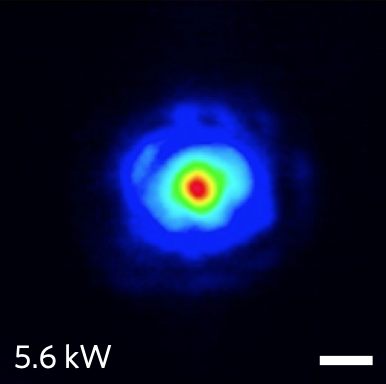Published/Posted: July 20, 2022
Authors: Dacha, Sai Kanth
DOI: 10.13016/ke2w-ziol
Abstract: The advent of the optical fiber in the second half of the 20th century has gone on to have numerous consequences not only for the advancement of telecommunication and information transfer technologies, but also for humanity as a whole. At the time of writing of this thesis, we live in a world that is defined by unprecedented and unparalleled access to information made possible by fiber optic cables that line the ocean beds. As the world becomes increasingly reliant upon the internet, the demand for access is outgrowing the pace at which the capacity of our fiber optic networks can be scaled up. In the past decade, a consensus has emerged among researchers in academia and the industry that we are now approaching the fundamental classical capacity limit of a conventional single mode fiber, namely the Shannon limit. This has spurred a great amount of interest in multimode fibers that allow for hundreds of spatial modes to co-propagate, potentially allowing for at least an order of magnitude increase in capacity per fiber. While multiplexing in the spatial domain has the potential to offer significantly higher capacities, linear and nonlinear mixing between the spatial modes of a fiber are expected to play an important role in determining the capacity and performance of spatially multiplexed telecommunication systems. So far, multimode fibers have mostly been relegated to low-power shortdistance links, as a result of which nonlinear propagation effects in the presence of multiple spatial modes has received relatively little attention. This thesis adds to a growing body of literature that is increasingly interested in uncovering the physics of multimodal propagation in the nonlinear regime. Although the need for spatial multiplexing serves as an important factor driving research interest in this topic, experiments in recent years have revealed a plethora of complex spatiotemporal nonlinear phenomena occurring in multimode fibers, including Kerr-induced beam selfcleaning, parametric instability processes and the existence of multimode solitons. This has sparked great interest in understanding multimodal nonlinearity from a fundamental and applied physics perspective. Most literature reported thus far focuses on complex phenomena occurring when hundreds of spatial modes co-propagate in the nonlinear regime. While that has proven to be a fascinating field of study, there have not been many studies on experimental investigation of intermodal nonlinear effects in the presence of a small number of spatial modes. Furthermore, nonlinear phenomena in multimode fibers are ‘spatiotemporal’ in nature, meaning that the spatial and timedomain waveforms are interlinked, and the two degrees of freedom cannot be separated out. However, conventional measurement techniques are not capable of resolving such a multimodal beam in space and time simultaneously. Finally, most research involving nonlinear optical effects has thus far focused on linearly polarized modes in conventional fibers, and nonlinear effects involving orbital angular momentum modes remains relatively understudied. In this thesis, we seek to study nonlinear optical effects involving a small number of selectively excited scalar as well as vector spatial modes, and to develop experimental techniques capable of resolving the output in space and time. To this end, we design, prototype and fabricate devices and methods aimed at exciting a small number of spatial modes of a fiber. In particular, we adopt methods from integrated photonics such as focused ion beam milling and metasurface devices to selectively excite modes of a fiber in an efficient manner. Spatial and temporal resolution of the output beam is achieved by the development of a new technique that involves raster-scanning of a near-field scanning optical microscopy probe, coupled with a high speed detector, along the output end-face of the fiber. Using these methods, we uncover and report our observations of spatiotemporal nonlinear phenomena that are unique to multimodal systems. We first demonstrate nonlinear intermodal interference of radially symmetric modes in step-index and parabolic index fibers. We then apply the same spatiotemporal measurement technique to observe the Kerr-induced beam self-cleaning phenomenon in a parabolic index fiber. And finally, we discuss our discovery of a spin-orbit coupled generalization of the well-known nonlinear polarization rotation phenomenon.Citation:
S. K. Dacha, "Spatiotemporal Nonlinear Optical Effects in Multimode Fibers", PhD Physics, University of Maryland (2022)
Manuscript: Dacha_Thesis_2022.pdf
